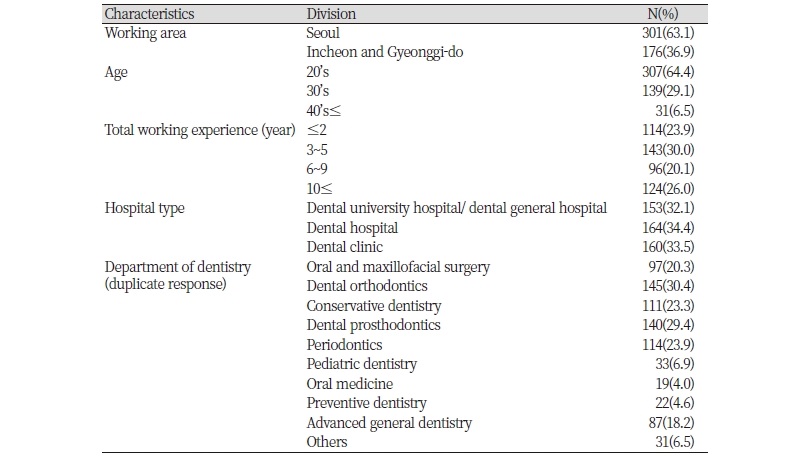Abstract
AbstractObjectives: This study investigates the dental hygienist’s main duties in clinical dental practice and examine whether dental hygienists can safely perform each duty by referring to the educational contents of dental hygiene departments and national examinations of dental hygienists. Methods: A questionnaire on the main duties of dental hygienists was administered to 477 clinical dental hygienists working at dental clinics and hospitals, general dental hospitals, and university dental hospitals in Seoul, Gyeonggi-do, and Incheon. We divide the dental hygienists’ clinical dental hygiene practice and clinical dental assist and analyze the legal scope of practice, university educational contents, and national examination contents. Statistical analysis was performed through frequency analysis, and multi-frequency data were analyzed using Excel 2013. Results: All 48 items (except 2 items of 29 dental hygiene practice and 21 assist practice items) surveyed were covered in the National Examination for Dental Hygienists and included in the Dental Hygiene Education Learning Objective. The multi-frequency clinical dental practice of eight items of clinical dental hygiene practice and two assist practice items were within the legal scope of the dental hygienist’s role. Conclusions: Further discussions are needed to redefine the legal scope of the role of the dental hygienist.
Figures & Tables

Table 1. General characteristics of dental hygienists (N=477)


